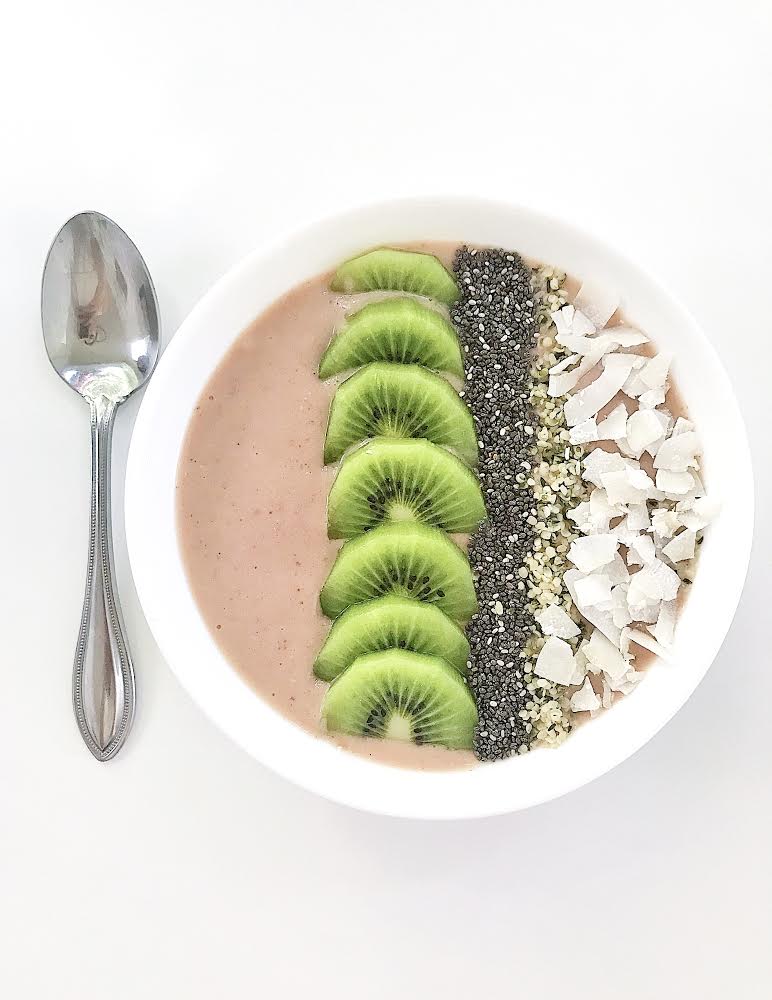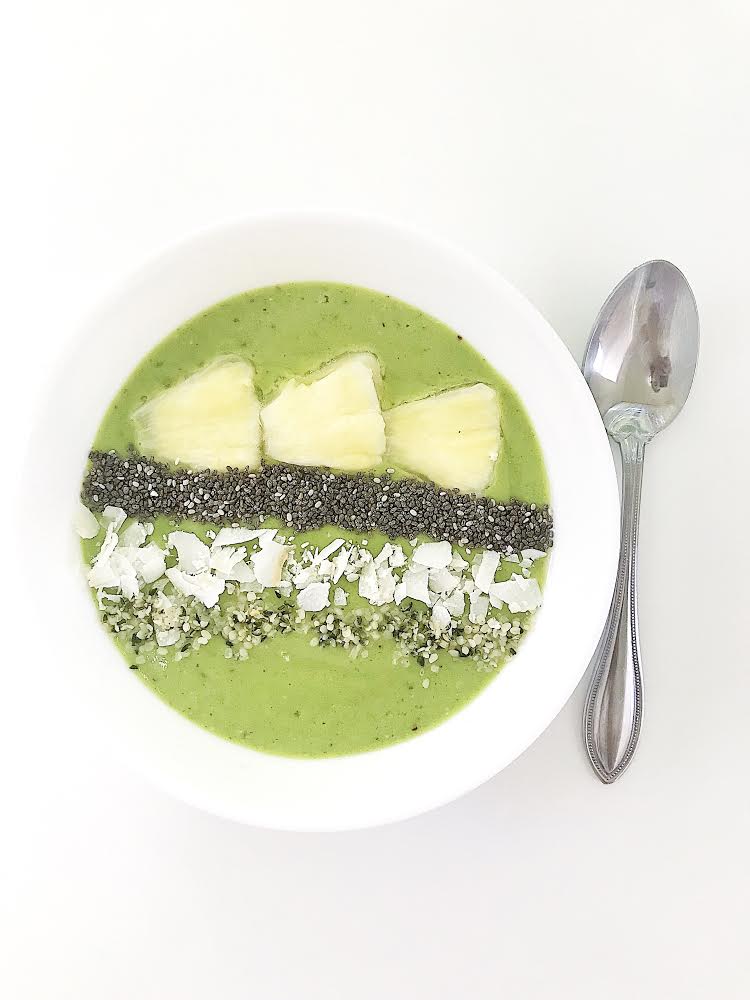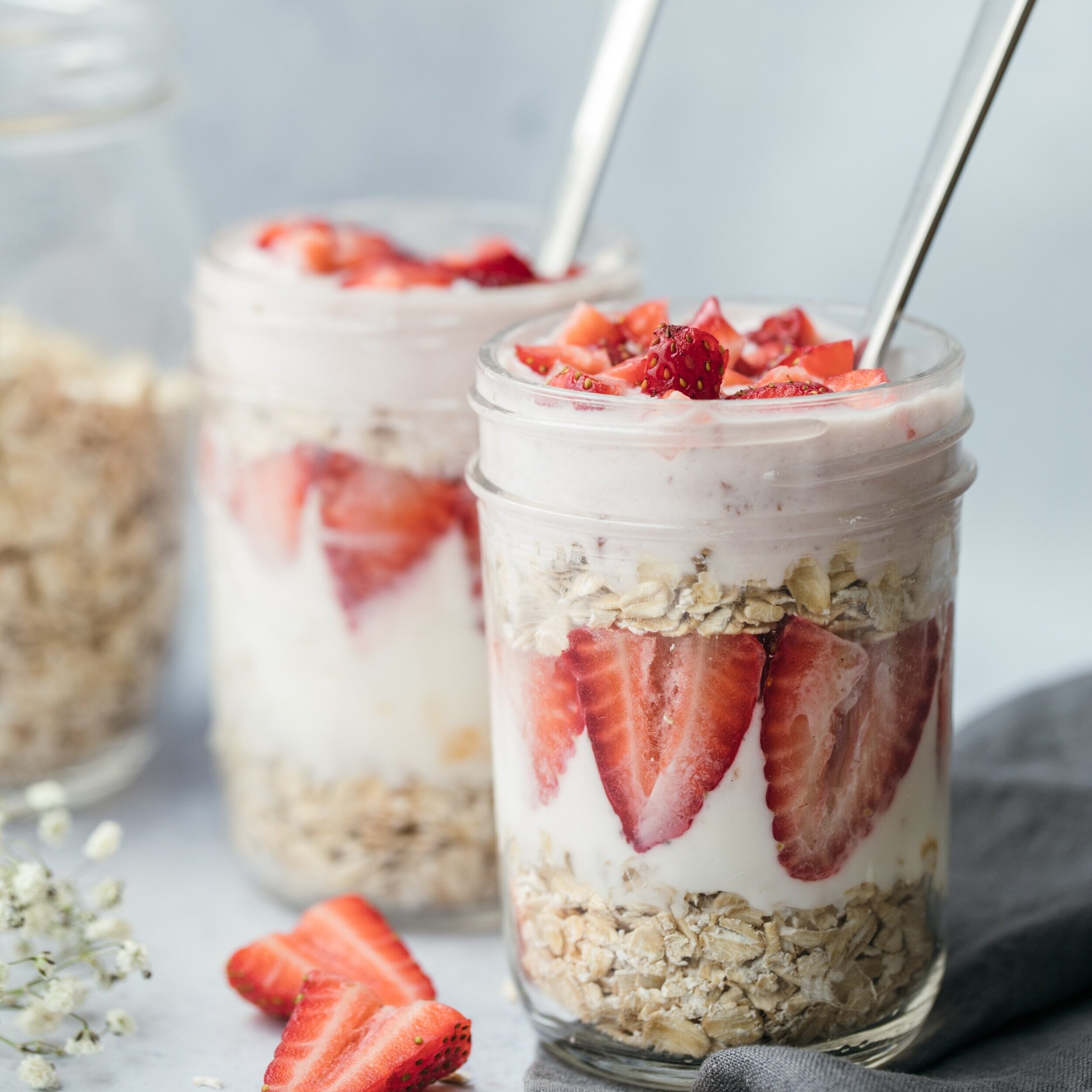Healthified: Low-Sugar Smoothie Bowls
by BRIGITTA SZEIBERT
Sugar, Honey, Honey
To say smoothies have a reputation for being healthy would be an understatement. These colorful concoctions have reached the status of modern day elixirs, boasting an infinity of health benefits condensed into one 16 ounce glass. While smoothies are generally a healthier alternative to other breakfasts such as a bowl of Fruity Pebbles or Frosted Flakes, they may contain more sugar than expected. Indeed, people tend to overlook the high sugar content from having so much fruit blended into one serving. Not to mention, add-ins like honey, fruit juice, and sweetened milk can quickly increase the overall sugar content. If you’re not mindful of the quantity and quality of the ingredients you throw into the blender, you could easily end up with a sugar bomb—albeit a natural one—for breakfast. Consuming high amounts of sugar first thing in the morning may cause your blood sugar to spike, leaving you to feel unsatisfied for the rest of the morning. [1] Read on for tips on how to give your smoothie a healthy makeover.
Smoothie Makeover
use unsweetened milk
Non-dairy milk, especially almond or soy milk, often comes with added sugar. Luckily, many stores carry unsweetened varieties as well. Since fruit already adds sweetness, consider using unsweetened milk.
add frozen, steamed cauliflower
Swap a piece of fruit with a handful of frozen veggies to lower the sugar content of your smoothie, while still maintaining a smooth, creamy texture. Personally, I love adding steamed, frozen cauliflower to supercharge my breakfast because it does not alter the taste drastically. Moreover, cauliflower offers a great source of the phytonutrient sulforaphane, vitamin C, and folate, which may promote weight loss. [2] Of course, the extra fiber doesn’t hurt either. A recent study published in Nutrients suggests that fiber can keep the microbiota in your gut well-fed, thereby reducing inflammation and improving intestinal health. [3]
add leafy greens
Leafy greens like kale and spinach are another way to take your smoothies to the next level. Instead of using fruit only, throw in a handful of kale that you’ve chopped and frozen the night before. Freezing kale has a dual purpose. It thickens your smoothie while simultaneously masking the distinctive taste of kale, allowing other fruity flavors to shine through.
choose fruits with naturally lower sugar content
If veggies aren’t your thing, consider swapping out high-sugar fruits for fruits naturally lower in sugar. For example, berries like blueberries, blackberries, and strawberries have a lower sugar content compared to mangoes, apples, bananas, and grapes. Blueberries, in particular, have been shown to extend the body’s glucose response due to their high anthocyanin content. [4]
Customization
One of the best things about smoothies is that they are easy to customize based on personal preferences, so don’t be afraid to change up recipes as you go! Here are some general tips for customizing your smoothie bowls.
Start with half a banana and about ½ cup of any frozen fruit.
Add more liquid if you want a more drinkable consistency. I am a big fan of smoothie bowls, but sometimes a thinner consistency is more practical for sipping your smoothie on the go.
Use coconut water for a lighter consistency. It also gives the smoothie a subtle coconut flavor.
Pour coconut milk into an ice cube tray overnight and add a few cubes to the blender for a creamy texture.
Now that you’re equipped with all the tips you need to makeover your smoothie bowl, it’s time to start blending away!
Recipes
raspberry mango smoothie
½ banana, frozen
½ cup mango, frozen
¼ cup raspberries, frozen
½ cup cauliflower, steamed and frozen
½ cup almond milk, vanilla unsweetened
¼ cup water (if needed)
1 cube frozen coconut milk (dairy option: sub 2 tbsp Greek yogurt)
1-2 tbsp old-fashioned rolled oats
Optional: 1 tsp ground flax meal powder, 1-2 tsp plant-based protein powder
Toppings: chia seeds, fresh sliced kiwi, coconut flakes, hemp seeds
blueberry coconut smoothie
½ banana, frozen
½ cup blueberries, frozen
½ cup vanilla almond milk, unsweetened
¼ cup water (if needed)
2 cubes frozen coconut milk (dairy option: sub 2 tbsp Greek yogurt)
1 tbsp old-fashioned rolled oats
Optional: ½ tsp ground flax meal powder, 1 tbsp plant-based protein powder
Toppings: chia seeds, blueberries, toasted coconut flakes, granola
peachy green smoothie
½ banana, frozen
½ cup peach, sliced
½ cup cauliflower, steamed and frozen
Large handful kale or spinach, chopped and frozen
½ cup vanilla almond milk, unsweetened
¼ cup water (if needed)
2 cubes frozen coconut milk (dairy option: sub 2 tbsp Greek yogurt)
1 tbsp old-fashioned rolled oats
Optional: 1 tsp ground flax meal powder, 1 tbsp plant-based protein powder
Toppings: chia seeds, peach slices, coconut shreds
References
“17 Healthy Breakfast Mistakes You Might Make This Morning.” rd.com. (2016).
“10 Best Slimming Foods.” everydayhealth.com (2007).
The Potential of Gut Commensals in Reinforcing Intestinal Barrier Function and Alleviating Inflammation.” Nutrients. (2018).
“A study of glycaemic effects following acute anthocyanin-rich blueberry supplementation in healthy young adults.” Food Funct. (2017).








